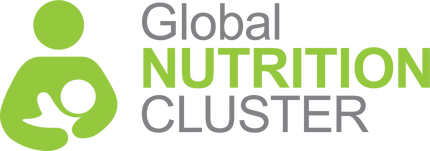Request support on coordination, information management, integration for nutrition outcomes or technical nutrition in emergencies assistance.
التماس الدعم لتنسيق التغذية وإدارة المعلومات والتغذية في حالات الطوارئ
Demander un appui pour la coordination de la nutrition, la gestion de l'information et la nutrition dans les situations d'urgence
Buscar apoyo para la coordinación de la nutrición, la gestión de la información y la nutrición en situaciones de emergencia
Solicite apoio para coordenação em nutrição, gestão de informação e nutrição em emergências
Colombia
OtherThe Food and Nutrition subgroup in Colombia, established in 2006, became the Food Security and Nutrition Cluster in 2010. It is co-led by the Food and Agriculture Organization of the United Nations (FAO), the World Food Programme (WFP), and UNICEF, working closely with other clusters/sectors (especially Protection, WASH and Health). Since then, the FSN Cluster has supported food security and nutrition preparedness and response in the context of protracted conflict and natural disaster events and built capacities of humanitarian actors to cover gaps in assistance, in coordination with the Colombian government and local authorities.
2023 Annual Report
January to December 2023
The Refugee and Migrant Needs Analysis 2023 (RMNA) describes the situation, gaps and challenges of refugees and migrant population as well as people affected by armed conflict and natural disasters in 2023. The purpose of this document is to shed light and insights that will inform the decision-making process concerning vulnerable population in the condition of refugees and migrants. The analysis is based on different information sources as well as the results of the latest join-needs assessment evaluation (2023). Furthermore, the RMNA is a key element for the development of the Regional Refugee and Migrant Response Plan 2024 (RMRP) that addresses the response for the more than 4 million refugees and migrants identified as having unmet humanitarian, protection, and integration needs.
https://rmrp.r4v.info/rmna2023/
Colombian Humanitarian Architecture defines two response plans:
a. The persistence of victimizing events such as confinement and/or displacement in Arauca, Cauca, Chocó, Córdoba, Tolima, and Nariño has affected the livelihoods, food security, and nutritional status of communities. As a result, it is projected that in 2024, 7.3 million people will have food security and nutrition needs at the national level.
In 2024, partners of the SAN Cluster will focus on anticipatory actions, preparedness, and response to the El Niño phenomenon and other humanitarian emergencies in coordination and complementarity with the government. The cluster's objectives include: (i) rehabilitating, maintaining, and/or protecting livelihoods with a risk management approach; (ii) providing in-kind food assistance and vouchers/cash; (iii) promoting breastfeeding, micronutrient supplementation, detecting nutritional risk, and providing treatment for acute malnutrition in children under 5 years, pregnant and lactating women.
b. The Regional Refugee and Migrant Response Plan (RMRP) led by the Regional Inter-Agency Coordination Platform (R4V), aims to address the humanitarian, protection and integration needs of both refugees and migrants from Venezuela, as well as, hosting communities. The RMRP strengthens and complements governments, international and civil society organizations’ national and regional responses:
RMRP: challenges that pose a risk to the nutritional condition is the recent re-activation of armed conflict. In some cases, the results are internal displacement, restrictions on their freedom of movement, or confinement which prevents the access to food and medical attention. Refugees and migrants in these situations face obstacles being recognized as victims of the armed conflict by the government, thus unable to exercise certain rights and access benefits that such a recognition would entail. Furthermore, throughout 2023, in-transit movements of refugees and migrants of various nationalities and including pregnant and lactating women, children and adolescents towards Central and North America, increased by 223% between January and August 2023, compared to the same period in 2022. Even though the last reports of 2023 showed a decrease in the migration flow, most of this decline is due to the seasonality and a rise of this numbers might be expected and be a challenge for providing the proper nutritional attention to the walking migrants.
HRP: At the end of 2023, the partners of the Nutrition Cluster reached 25% of the target population. Securing increased funding for Nutrition projects and expanding operational capacity in the territory to improve coverage of nutritional care actions continues to be a challenge.
Key Figures
(million)Funding
(million)- Children aged 6-59 months
- Pregnant and Lactating Women








